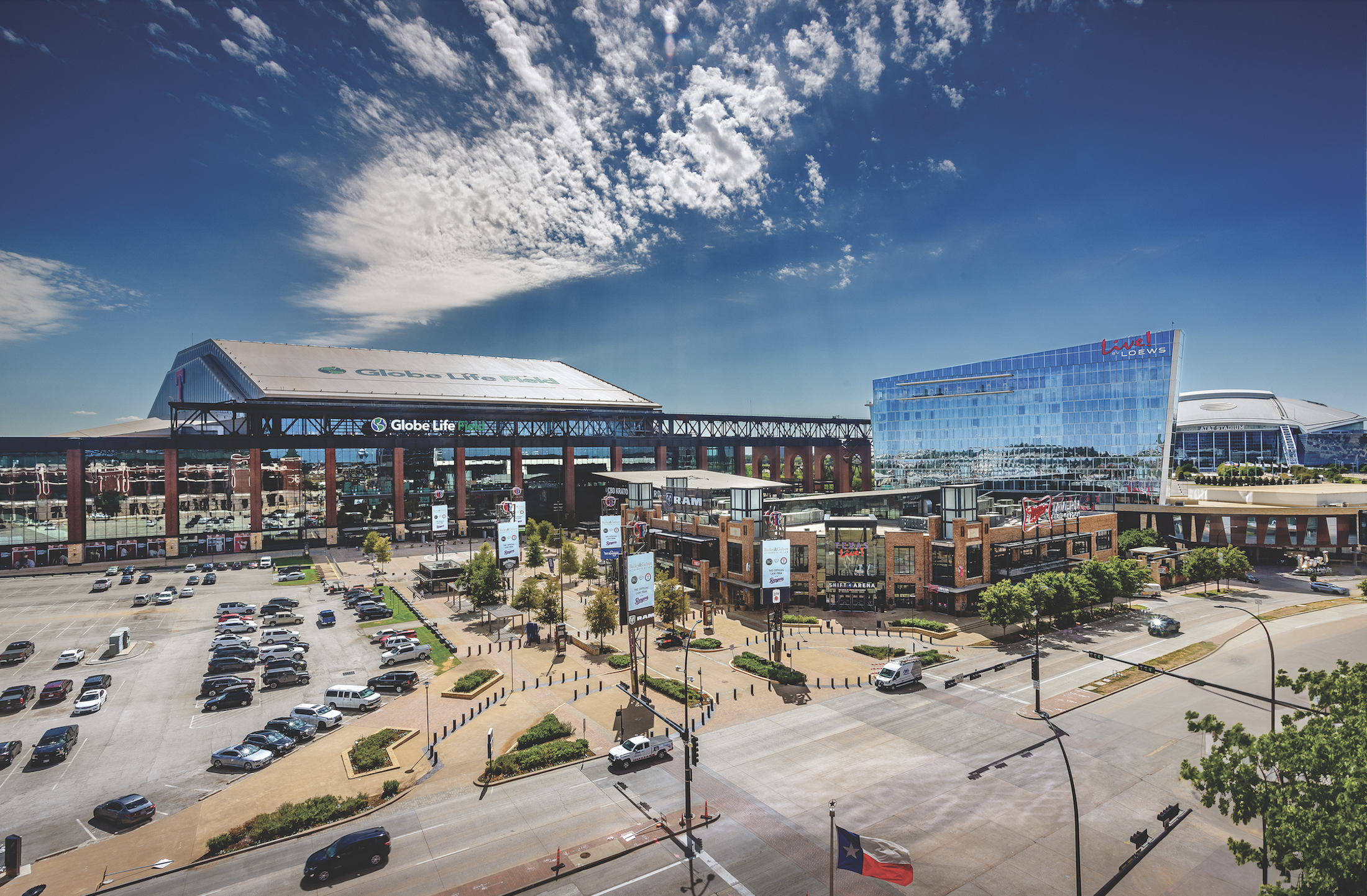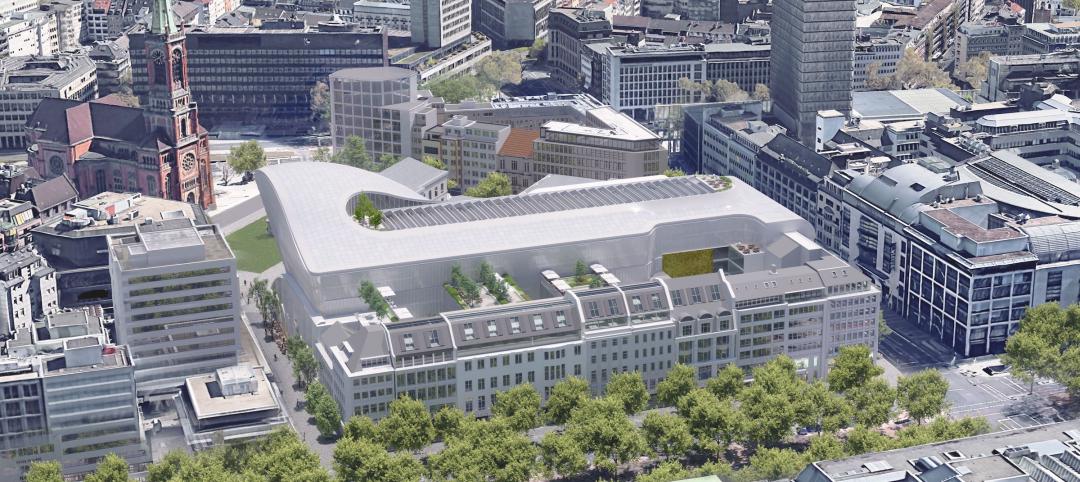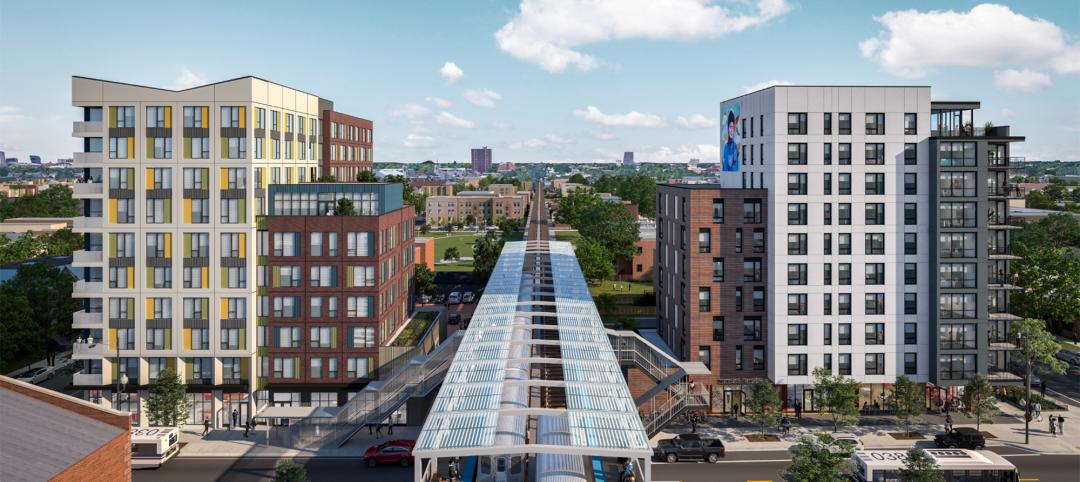On September 6, a group of business, civic, and university leaders known as Team Norman presented what they saw as two possible futures for Norman, Okla., that state’s third-largest city: either remain a bedroom community in the shadow of the University of Oklahoma (OU) or strive to become “a unique destination,” said Norman’s Mayor Larry Heikkila. The city craves the latter direction, asserted Lawrence McKinney, President of the Norman Economic Development Coalition, a conclusion based on his group’s 400 hours of listening to stakeholders and constituents in the region.
Team Norman used this meeting to promote its proposal for a $1 billion entertainment district, a mixed-use development on 200 acres adjacent to Max Westheimer Airport, which would include a new multipurpose arena that replaces the 48-year-old, 11,000-seat Lloyd Noble Center on OU’s campus, which McKinney tells BD+C is no longer adequate for creating the kind of experiences that fans and visitors expect.
Norman is one of a growing number of metros that are staking their futures on the vitality and drawing power of entertainment districts (see sidebar on page 24). Some of the recent proposals would touch only a few blocks; others are massive undertakings with matching price tags.
These proposals often mirror the mix of buildings found within existing districts, the most successful of which are those that refuse to stand pat and evolve to provide visitors—and, increasingly, workers and residents—with new reasons to live, work, and play there.
In May 2022, Clearline Real Estate paid $19.75 million for a 0.9-acre development site in the heart of Downtown Miami’s Arts & Entertainment District. Sixteen months later, Clearline and Shawmut Design and Construction announced that they would build a 24-story, 338,000-sf tower on that site called Excel Miami, consisting of 427 apartments, half of them micro units. “Miami’s Arts & Entertainment District was the missing piece to create an easily accessible, fully walkable cultural spine running the north-south strip of the city,” explains Alexis Leal, Shawmut’s Head of Florida. “Creating housing in this opportunity zone fills a need and brings critical mass to an area that has transformed immensely.”
Financing poses challenges for entertainment districts
Even as their popularity expands, entertainment districts still get occasional pushback from municipalities, usually over who’s footing the bill. (Rezoning seems to be less of an obstacle, according to the developers interviewed by BD+C.) In 2018, a $91 million plan by the city of Norman to create a district with an arena derailed over requests for tax incentives. Last May, city officials in Tempe, Ariz., concluded they didn’t have voter support for three propositions related to a new entertainment district that included a new arena for the financially troubled Arizona Coyotes NHL franchise.
Even projects that are moving forward must figure out ways to pay for their developments that are palatable to voters. Several of the districts being proposed, like Miami Freedom Park, would be privately funded, wholly or partly. The city of Anaheim, Calif., reportedly plans to float $400 million in bonds to help defray the cost of its ocV!BE district. In St. Louis, Green Street Real Estate Ventures has been working on getting tax credits to redevelop the 1.5 million-sf Famous Barr Warehouse as part of its Armory STL district proposal. Norman’s district would be folded into a tax increment financing district that uses property taxes to improve the local built environment. Norman officials also debated whether the proposed entertainment district might require bond financing.
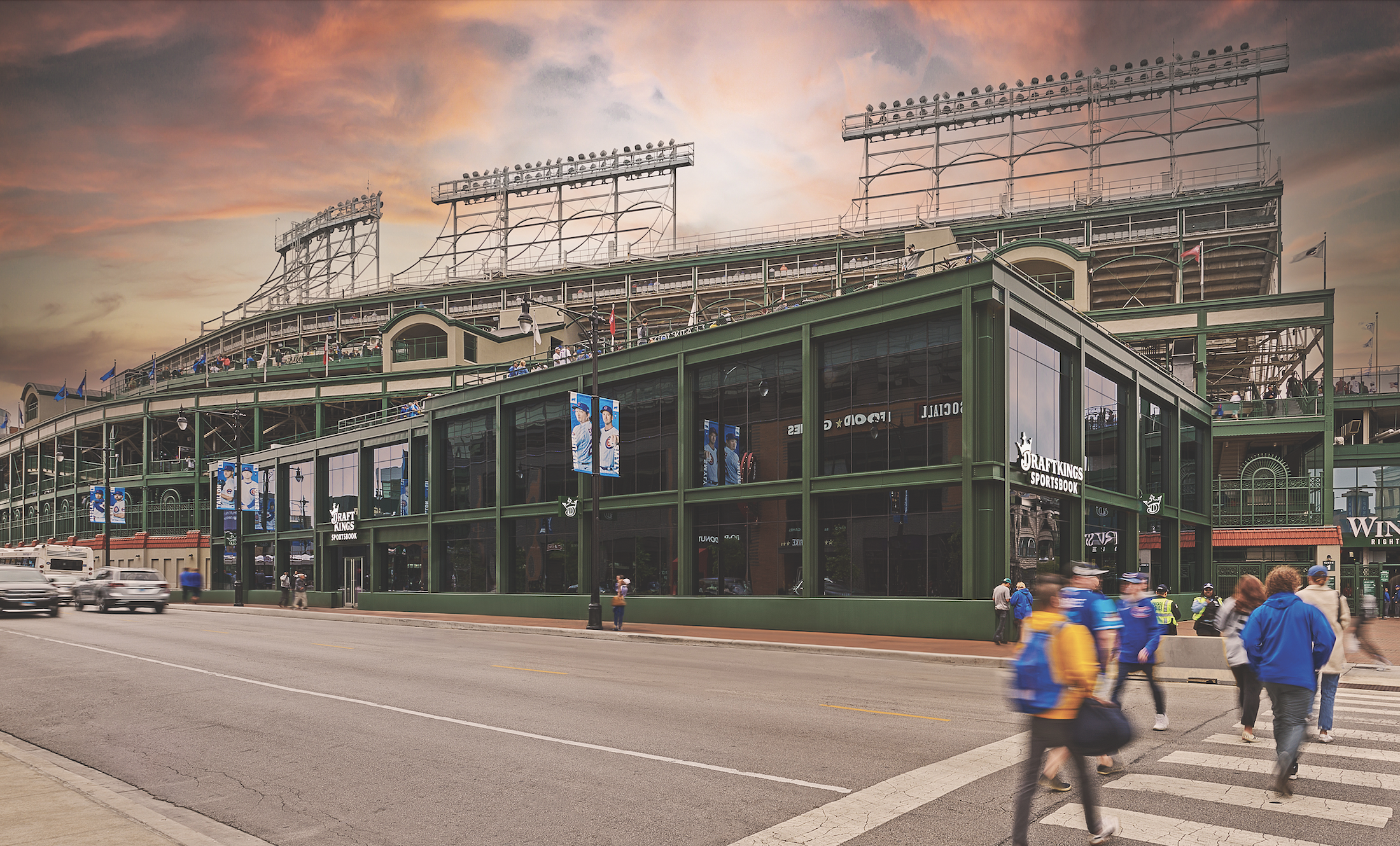
However, the cost factor hasn’t impeded demand or enthusiasm for entertainment districts, and there are myriad reasons why these projects continue to be sought-after solutions for urban revitalization.
For one thing, there are plenty of successful precedents: Populous, the architectural design firm that has several entertainment district designs under its belt, works with feasibility partners that track economic data in districts. Three markets where there have been notable urban transformations sparked by sports-anchored venues are Washington, D.C. (around Audi Field and Nationals Park), Denver’s LoDo and Diamond District (around Coors Field), and Milwaukee’s Deer District (around Fiserv Forum). John Shreve, Populous’ Senior Principal and Senior Urban Planner, notes that Battery Atlanta, the year-round entertainment district, draws more than double the three million fans who attend Atlanta Braves home games at the district’s anchor stadium, Truist Park, seasonally.
Municipalities also like entertainment districts because they generate tax revenue, and lure visitors who might otherwise sidestep that part of the city. Janet Long, Pinellas County (Fla.) Commission chairperson, was quoted as calling the planned Tampa Bay ballpark and entertainment district—the largest development project in the county’s history—an “unprecedented opportunity with huge economic, workforce, and quality of life potential for our residents.” Michael Harrison, Senior Managing Director of Hines, the managing developer on this project, added that his firm’s goal is to create “one of the most exciting placemaking destinations in the world.”
Related: 12 U.S. markets where entertainment districts are under consideration or construction
In Norman, the goals of the proposed entertainment district are manifold: to attract newcomers to a state that has only 53 workers for every 100 available jobs; to generate revenue for a city that currently isn’t zoned for retail and is located just north of the state’s busiest shopping mall, University Town Center, which draws 60% of its patrons from outside Cleveland County; and to add more housing for a city whose population is expected to increase 52,000 by 2040.
Indeed, the consensus holds that entertainment districts set the stage for broader construction and renovation around the district. John Moncke, President of Kansas City Power & Light District, which attracts some 10 million visitors annually, tells BD+C that this district, when it first opened 16 years ago, was intended to catalyze the downtown area, and its impact since “can be felt well beyond its original nine city blocks.”
Sustaining traffic during the off season
The multipurpose arena T-Mobile Center is on the east side of KCP&LD. Many other existing and proposed entertainment districts revolve around stadiums and arenas with built-in fan bases. But the most successful districts also feature building types that attract people when teams aren’t playing.
This sports-district nexus is sometimes the result of professional team owners also being developers. One thriving template is Battery Atlanta, the 2.25 million-sf entertainment district owned by the Braves Development Company, which features hospitality, dining, shopping, 500-plus residential units, performance space, and corporate office options.
A recent article posted on SB Nation’s Royals Review site, about the Kansas City Royals’ two district proposals, noted that through the six months ending June 30, the Braves’ baseball operations had an operating income of $10.58 million on revenue of $272.5 million. While Battery Atlanta’s revenue over that same period was only $28.6 million, its operating income was $16.4 million. And the Braves aren’t obligated to share the district’s proceeds with the rest of the league.
Those profitability comparisons notwithstanding, a sports venue that’s sited within or near an entertainment district is generally considered a net positive. Robert Weis, Gensler’s Global Leader–Immersive Experience Design, believes that districts can be “complimentary” to sports venues, and take advantage of their infrastructure. Jon Niemuth, Director of Gensler Sports, adds that districts are evolving to the point where “it’s not about sports so much anymore as the experience. It’s culture and sports, or sports and food, or sports and music, culture, and housing.”
Phil Hulse, Founder and CEO of Green Street Real Estate Ventures, concedes that sports-anchored districts “are one way to go.” And Armory STL would be in the same neighborhood as Enterprise Center, where the St. Louis Blues hockey franchise plays, and a major league soccer field. But his pitch for Armory STL was that it would also be near universities and innovation hubs, and be a part of Midtown’s 13 historic neighborhoods.
Housing now a staple component of entertainment districts
Several sources interviewed for this article agree that diversity of experiences is what makes entertainment districts tick these days. That’s one reason, these sources contend, why offices continue to be included in district proposals. And in their efforts to emerge as year-round destinations, more districts are either including residential in their proposals or supporting existing districts with housing.
Populous has been working on the redevelopment of Pittsburgh’s North Shore for 25 years, says Shreve. It designed the district’s master plan and its two stadiums. At first, housing wasn’t seen as essential to the district’s growth. But what became evident was the lack of vitality in the district after hours and on non-game days. Since then, says Shreve, the sports teams and their development partner have introduced a residential project next to the district’s ballpark that will bring 100 new apartments to the North Shore.
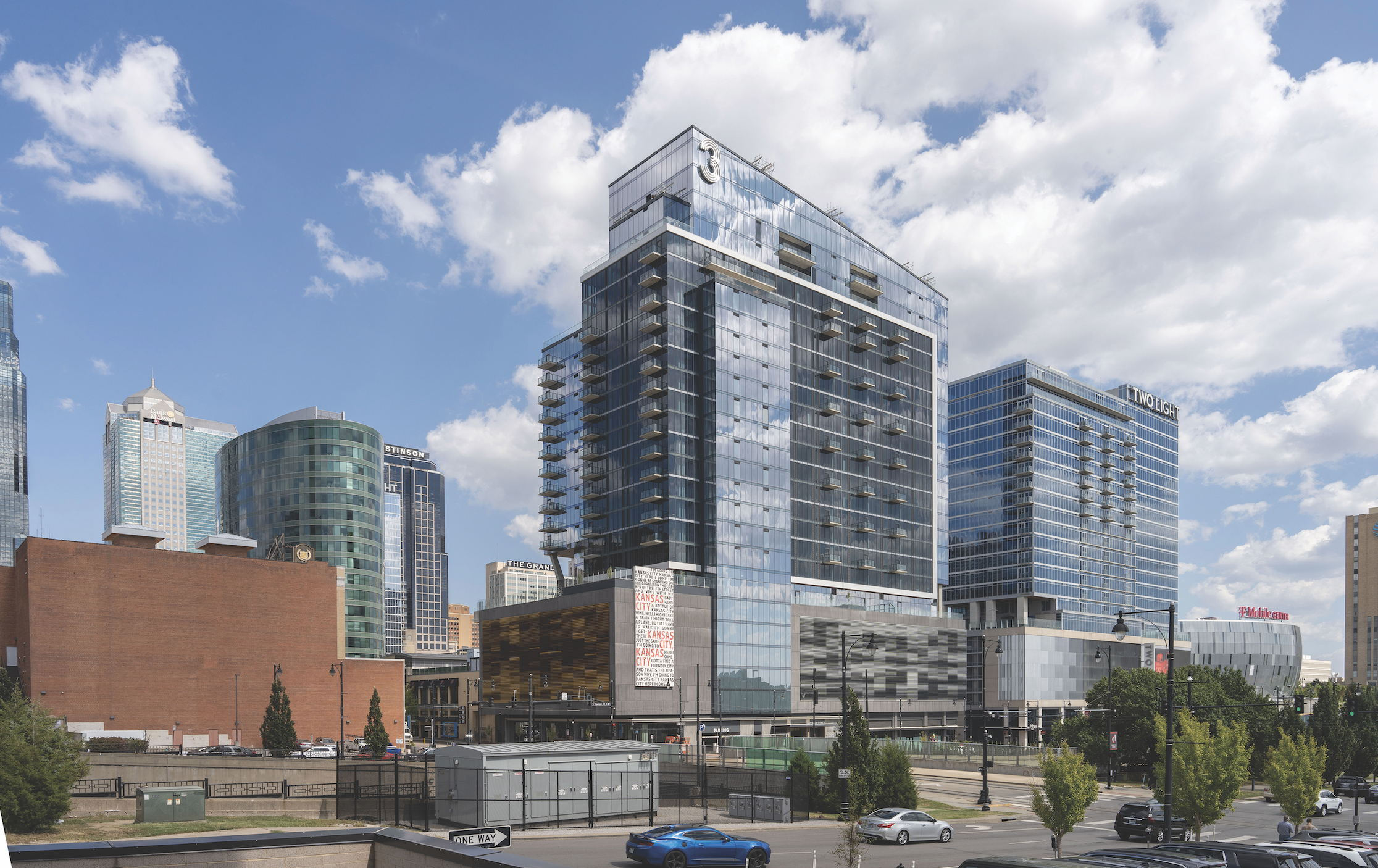
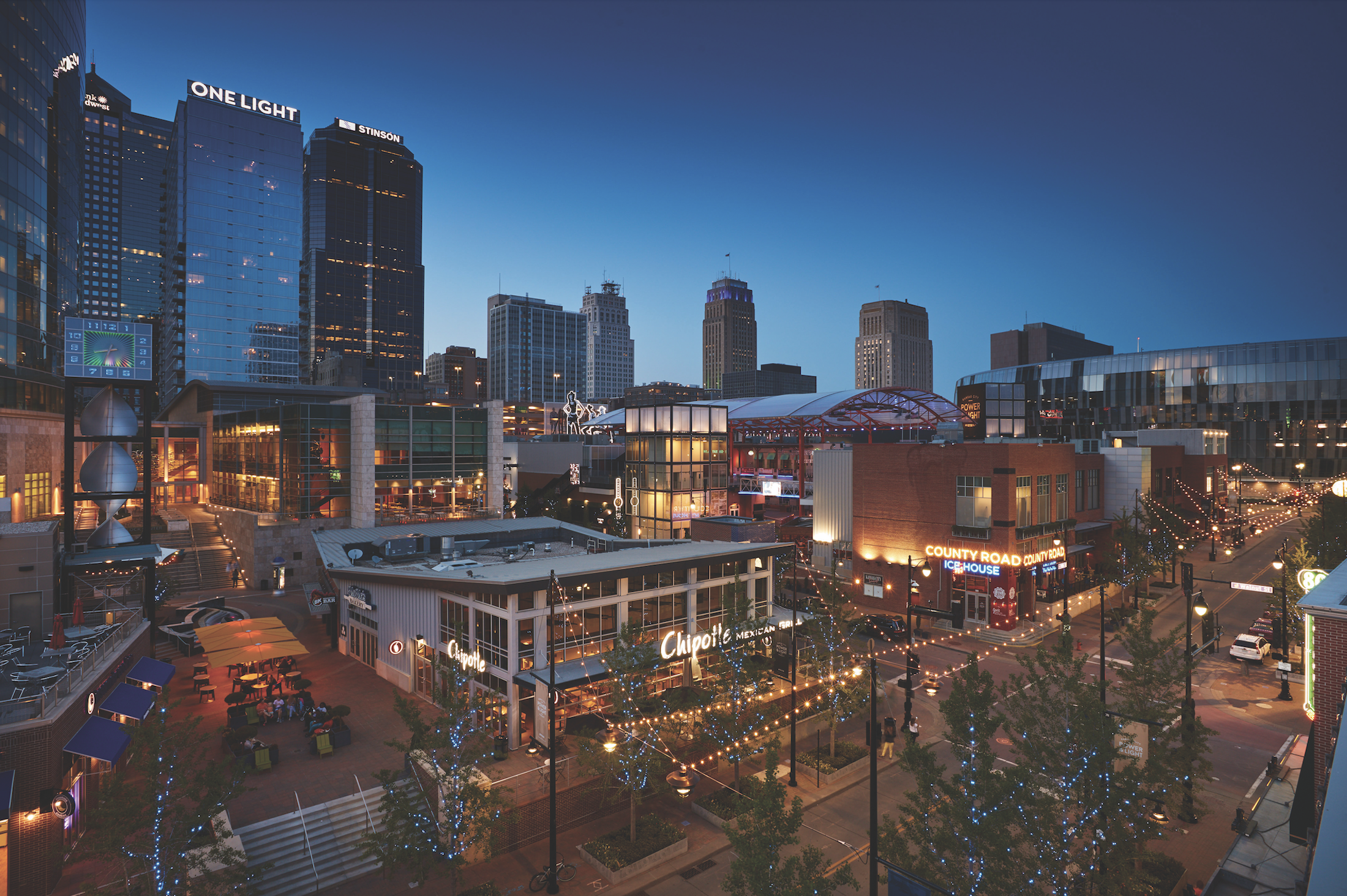
The 2,700-acre Arlington Entertainment District in Texas draws some 15 million visitors per year. It includes two stadiums (for the Dallas Cowboys and Texas Rangers), two Six Flags theme parks, a 302-key Loews hotel, and the 300,000-sf Texas Live! entertainment, dining, and performance venue. Private investments in this district have totaled $3.9 billion so far.
Arlington is an example of a district that’s not content to rest on its laurels. It recently opened a 30,000-sf two-level coworking space called Spark Arlington with 61 private offices. Next year, its additions will include an 880-key Loews Arlington hotel with a 266,000-sf convention center, and the Arlington Museum of Art, which is relocating from its long-time downtown home to a 48,000-sf space that’s eight times larger inside the district’s Esports Stadium and Expo Center.
In April 2025, the Arlington Entertainment District will open a $150 million Medal of Honor Museum. That same month, Cordish and the Texas Rangers baseball club are expected to complete One Rangers Way, the district’s first foray into housing. This $70 million, 299-unit community, designed by Hord Coplan Macht, will include 43,000 sf of amenities.
Brent DeRaad, President and CEO of the Arlington Convention & Visitors Bureau, tells BD+C that finding growth-minded private-sector partners like Loews, Cordish, and the sports teams, is critical to maintaining an entertainment district’s dynamism.
Roy Decker, President of Mississippi-based Duvall Decker Architects, which conducted the site-selection study for the Museum of Art, says that the availability of the district’s Expo Center, with its tall ceilings and already-in-place technology, made the relocation decision a no brainer. Decker adds that the museum’s programming—it doesn’t have a permanent collection and has experimented with immersive exhibits—and the coincidental opening of the Medal of Honor Museum next to the Expo Center, fit well with the district’s evolution as a cultural center.
Variety will define future districts
It’s not uncommon now for cities to have multiple districts. The new Nashville Live! venue, for example, will be only blocks from Fifth + Broadway, a live-work-play development that opened in June 2021. Developers and owners don’t sound overly concerned about possible market saturation. At the same time, districts are emphasizing their unique features. For example, ocV!BE in Anaheim would include an on-site solar farm that generates 6 MWs of power. Hulse of Green Street says his plans include building a data center that could draw power from a substation near Famous Barr Warehouse.
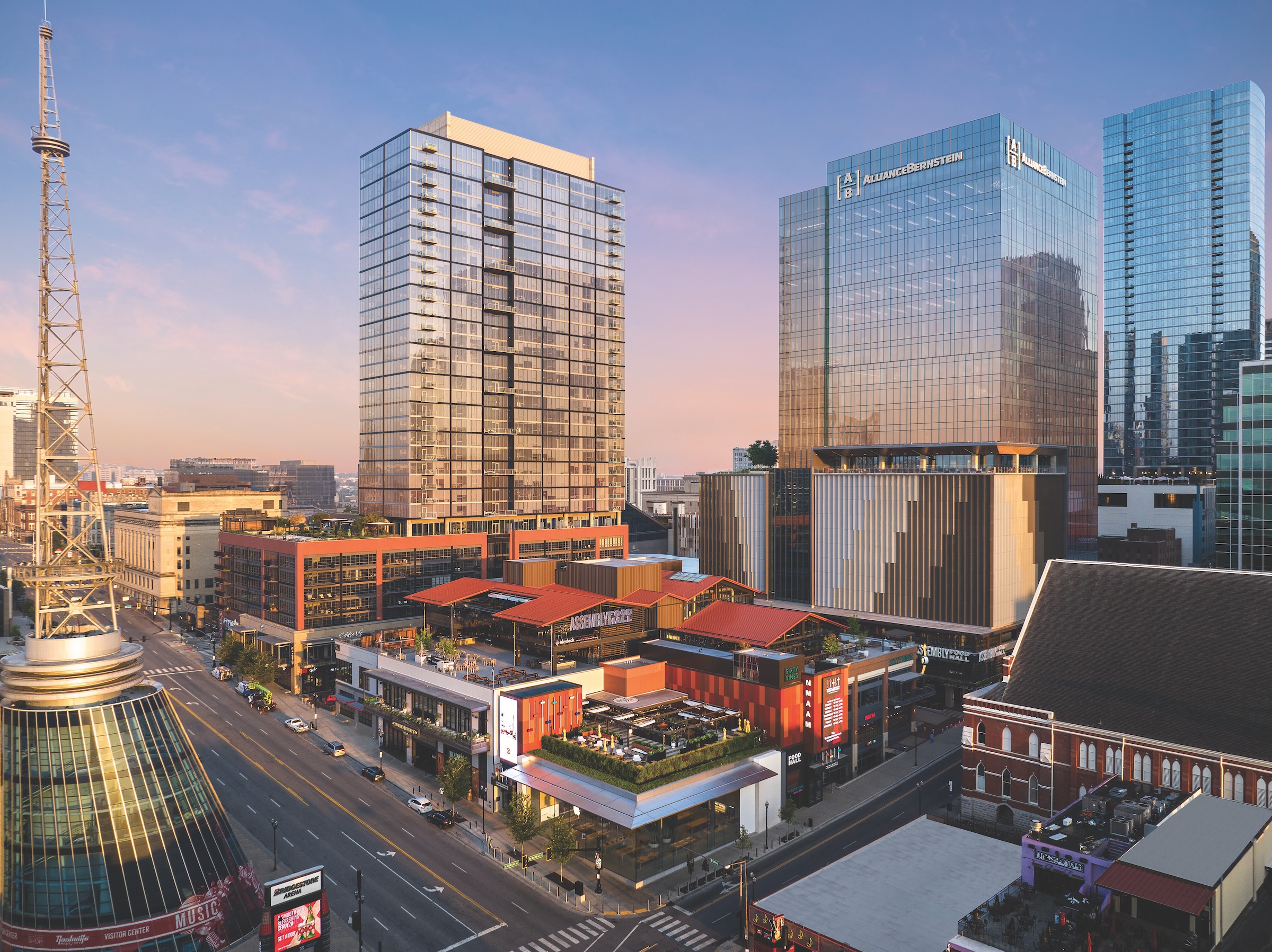
In Kansas City, where multiple entertainment districts are either operating or on the drawing board, Pennway Point would be different in that it would be family friendly with a midnight shutdown, says Dante Passantino, Managing Director of DaVinci, its master-tenant developer.
“The longevity of the built world depends on the diversity of uses that animate it every day,” says Riki Nishimura, Populous’ Principal and Senior Urban Designer. Gensler’s Weis suggests that district developers need to find anchors that project the essence of their cities and make it accessible. (Weis likes science and technology centers as options.)
During Team Norman’s proposal presentation, Mayor Heikkila spoke about future plans for other themed districts that include a “weather exploratorium,” a STEAM-focused museum for which Nashville-based D&G Consultants recently completed a feasibility study.
McKinney, President of Norman’s economic development coalition, elaborates that there are five or six areas around the city being considered for themed districts, including a 700-acre site in east Norman that the city has owned for 100 years. He cautions, however, that the funding to purchase land for any future developments will depend on revenues generated by the initial entertainment district being proposed. That district’s approval, he said in late September, “is in the hands of the city council.”
Related Stories
Urban Planning | Apr 12, 2023
Watch: Trends in urban design for 2023, with James Corner Field Operations
Isabel Castilla, a Principal Designer with the landscape architecture firm James Corner Field Operations, discusses recent changes in clients' priorities about urban design, with a focus on her firm's recent projects.
Market Data | Apr 11, 2023
Construction crane count reaches all-time high in Q1 2023
Toronto, Seattle, Los Angeles, and Denver top the list of U.S/Canadian cities with the greatest number of fixed cranes on construction sites, according to Rider Levett Bucknall's RLB Crane Index for North America for Q1 2023.
Contractors | Apr 10, 2023
What makes prefabrication work? Factors every construction project should consider
There are many factors requiring careful consideration when determining whether a project is a good fit for prefabrication. JE Dunn’s Brian Burkett breaks down the most important considerations.
Mixed-Use | Apr 7, 2023
New Nashville mixed-use high-rise features curved, stepped massing and wellness focus
Construction recently started on 5 City Blvd, a new 15-story office and mixed-use building in Nashville, Tenn. Located on a uniquely shaped site, the 730,000-sf structure features curved, stepped massing and amenities with a focus on wellness.
Affordable Housing | Mar 14, 2023
3 affordable housing projects that overcame building obstacles
These three developments faced certain obstacles during their building processes—from surrounding noise suppression to construction methodology.
Mixed-Use | Mar 11, 2023
Austin mixed-use development will provide two million sf of office, retail, and residential space
In Austin, Texas, the seven-building East Riverside Gateway complex will provide a mixed-use community next to the city’s planned Blue Line light rail, which will connect the Austin Bergstrom International Airport with downtown Austin. Planned and designed by Steinberg Hart, the development will include over 2 million sf of office, retail, and residential space, as well as amenities, such as a large park, that are intended to draw tech workers and young families.
Sports and Recreational Facilities | Feb 27, 2023
New 20,000-seat soccer stadium will anchor neighborhood development in Indianapolis
A new 20,000-seat soccer stadium for United Soccer League’s Indy Eleven will be the centerpiece of a major neighborhood development in Indianapolis. The development will transform the southwest quadrant of downtown Indianapolis by adding more than 600 apartments, 205,000 sf of office space, 197,000 sf for retail space and restaurants, parking garages, a hotel, and public plazas with green space.
Retail Centers | Feb 24, 2023
Santiago Calatrava unveils plans for a luxury retail and office complex in Düsseldorf, Germany
Renowned architect and engineer Santiago Calatrava, along with the CENTRUM Group, has unveiled plans for Calatrava Boulevard, a luxury retail and office complex in Düsseldorf, Germany. Running parallel to Königsallee and connecting with the Steinstrasse station, Calatrava Boulevard will incorporate and connect to the boulevard’s existing buildings.
Mixed-Use | Feb 23, 2023
7 mixed-use developments that don't sacrifice housing affordability
Here are seven mixed-use, multifamily projects dedicated to providing affordable housing.
Multifamily Housing | Feb 21, 2023
Watch: DBA Architects' Bryan Moore talks micro communities and the benefits of walkable neighborhoods
What is a micro-community? Where are they most prevalent? What’s the future for micro communities? These questions (and more) addressed by Bryan Moore, President and CEO of DBA Architects.


